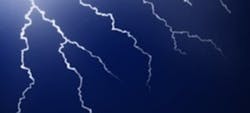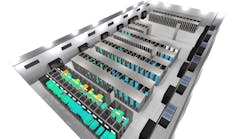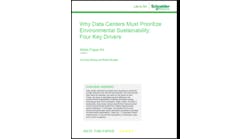Weather Proofing a Data Center: What to look for
In this week’s Voices of the Industry Josh Moody, Senior Vice President of Sales and Marketing at FORTRUST, discusses weather proofing a data center and what to look for.
Josh Moody, SVP Sales FORTRUST
When it comes to selecting a colocation provider, there are numerous critical considerations decision-makers have to take into account. While the facility’s location is one of the most common factors here, many businesses tend to overlook certain essential details associated with this, including the impact the local climate could have on data center operations.
According to a new study from the Ponemon Institute, inclement weather caused 10 percent of unplanned facility outages last year, demonstrating its importance to both facility operators and their customers. When seeking a robust, industry-leading colocation provider, it’s essential that the data center has specific safeguards in place to prevent damage and service outages that can be caused by storms, tornadoes, hurricanes, snow and other severe weather.
There are a few key strategies that data center operators can utilize to ensure the protection of their facilities, as well as the safety of clients’ equipment and critical data. These vary depending on where the building is located, but can include:
“Inclement weather caused 10% of unplanned facility outages last year.”
Flood planning
According to findings from the Federal Emergency Management Association, there have been more than 700 instances of severe flooding reported in the U.S. since 1953, The Washington Post reported. Certain regions are more prone to these events, including areas of North Dakota, Minnesota, southern California and New Mexico. While severe rain storms that can result in rising waters can take place in nearly any location, data centers situated in these zones must be particularly cautious and ensure that the facility is built to withstand wet conditions.
One of the best resources to leverage here is FEMA’s flood map information. FEMA has specific flood hazard information accessible, which can help customers identify areas that are at a higher risk for flooding.
Earthquake safeguards
In addition to being broken down by flooding categories, there is also a system in place to gauge a region’s risk for earthquakes. These incidents can be considerably damaging, particularly if the data center structure isn’t rated to handle such an event.
While fewer than 200 earthquake-related disasters have been reported since 1953, these instances can wreak havoc on buildings and sensitive technical equipment.
Even data centers located in low-risk areas should have earthquake protection in place. These can include seismic zone-rated stands, mounts and rollers in the mechanical systems to ensure that equipment isn’t damaged or broken, and operations can continue should an earthquake take place.
Fire security
Fires are the second-most common disasters, according to FEMA. And since these events can take place in any location, it’s particularly important that data centers have safeguards in place to ensure protection.
In addition to coverings for electrical systems, today’s data centers should also be equipped with special fire walls. These are typically rated according to hours, and can help prevent flames from spreading from one region of the data center to other, more sensitive areas housing computing equipment.
Business leaders must ensure that their colocation provider is adequately prepared to deal with severe weather.
Severe storm protections
FEMA’s research shows that severe storms are the most commonly reported disaster, with more than 800 instances taking place in the last six decades. Severe storms can result in numerous other dangers — including heavy snow, tornadoes, flooding and hurricanes — depending on the location. When it comes to data center operations, however, these instances typically result in utility interruptions that can cause service outages.
For this reason, it’s critical that businesses seek a colocation provider that has numerous redundancies in place, including backups for the electrical and network connectivity systems. In this way, the data center operator can utilize generator energy if electricity is unavailable or leverage a backup network link if a primary connection goes down.
Building and construction considerations
In addition to planning for severe storms, floods or fires, data center providers should also integrate safety and a comprehensive security methodology into their processes from inception. This means using certain strategies, design criteria and materials during the construction process to ensure that once the data center is up and running, it is fully protected.
While this can extend to different areas of the facility, these considerations can include installing a thick concrete foundation, bulletproof glass windows, dedicated man traps and rebar wall reinforcements. These can help ensure that no matter what weather events take place in the region, the data center will stand firm.
Overall, data center providers must have several different safeguards in place to protect against environmental risks. As noted, these will largely depend upon the location of the facility. For this reason, decision-makers should ensure that when they examine the location of the colocation data center, they consider the climate and weather the region is impacted by as well.
Submitted by Josh Moody, Senior Vice President of Sales and Marketing, for FORTRUST, a leader in colocation services. FORTUST has a range of essential safeguards in their Denver data center to ensure that clients’ data is as secure as possible. The Denver facility was built outside both the 100- and 500-year floodplains, and is nearly 50 feet above FEMA’s maximum flood elevation. Although Colorado has a low risk for earthquakes – located in seismic zone 1 – FORTRUST’s Denver data center was constructed with seismic zone 4-rated mechanical system safeguards to provide maximum protection against such events. The facility has a 14-inch concrete foundation as well as 6-inch slab reinforced walls. Sensitive areas, including critical raised floor data center areas, are windowless, and all offices have bulletproof glass. In addition to the data center’s two- and four-hour-rated fire walls, there is also a fire department and fire responder unit located on the property. FORTRUST has invested in their Denver data center to ensure safety and redundancy, creating one of the safest locations possible for mission-critical data. To find out more about the safeguards FOTRUST has in place, contact them to schedule a tour.





